Want to enjoy darts properly? The most crucial step is to **dartboard richtig aufhängen** at the regulation height and distance. This article will guide you through the precise measurements, essential equipment, and a step-by-step process to ensure your dartboard is perfectly positioned for fair play and maximum enjoyment. We’ll also cover common mistakes to avoid and some helpful tips for maintaining your setup.
⚠️ Still Using Pen & Paper (or a Chalkboard)?! ⚠️
Step into the future! The Dart Counter App handles all the scoring, suggests checkouts, and tracks your stats automatically. It's easier than you think!
Try the Smart Dart Counter App FREE!Ready for an upgrade? Click above!
Warum ist es wichtig, das Dartboard richtig aufzuhängen? (Why is it Important to **dartboard richtig aufhängen**?)
Properly mounting your dartboard is more than just aesthetics; it directly affects the fairness and accuracy of your game. A correctly positioned board ensures that every player has the same throwing opportunity and that the game adheres to official regulations. Ignoring these guidelines can lead to frustration, inconsistent gameplay, and even potential injuries. Imagine constantly having to adjust your stance or aim because the board is slightly off – it’s simply not enjoyable! Furthermore, playing with a board mounted at the wrong height can lead to damage to your darts or the surrounding area. By taking the time to **dartboard richtig aufhängen**, you’re investing in a better, safer, and more competitive darting experience for everyone.
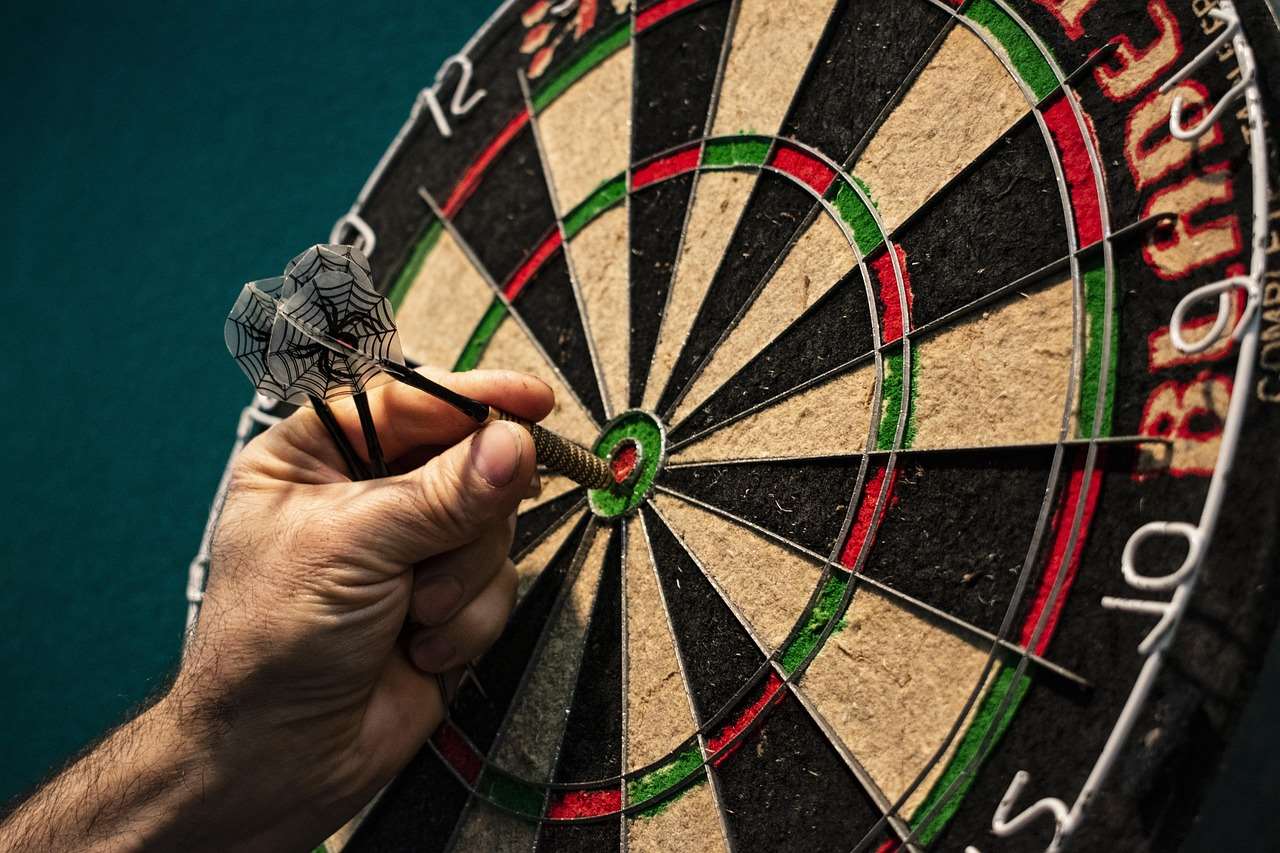
Die Vorteile einer korrekten Montage: (The Benefits of Correct Mounting)
- Fair play: Everyone has an equal chance of hitting their target.
- Accurate gameplay: Consistent measurements lead to more predictable throws.
- Reduced risk of injury: Proper height minimizes awkward throwing angles.
- Protection of darts and surroundings: Correct positioning prevents darts from bouncing off and damaging walls or the floor.
- Professional feel: A properly mounted board elevates the overall experience and replicates a professional dart setup.
Die offiziellen Maße: Höhe und Abstand (The Official Measurements: Height and Distance)
Adhering to the official dimensions is vital for a genuine darts experience. These measurements are standardized by the World Darts Federation (WDF) and the Professional Darts Corporation (PDC). Here’s what you need to know:
- Height: The center of the bullseye should be exactly 5 feet 8 inches (1.73 meters) from the floor. Use a measuring tape and level to ensure accuracy.
- Throwing Distance (Oche): The distance from the face of the dartboard (the vertical plane of the board) to the throwing line (oche) should be 7 feet 9 1/4 inches (2.37 meters). This measurement is crucial for consistent throws.
- Diagonal Distance: As an alternative to measuring the horizontal distance, you can measure the diagonal distance from the bullseye to the oche. This distance should be 9 feet 7 3/8 inches (2.93 meters). This method can be useful if your throwing area isn’t perfectly rectangular.
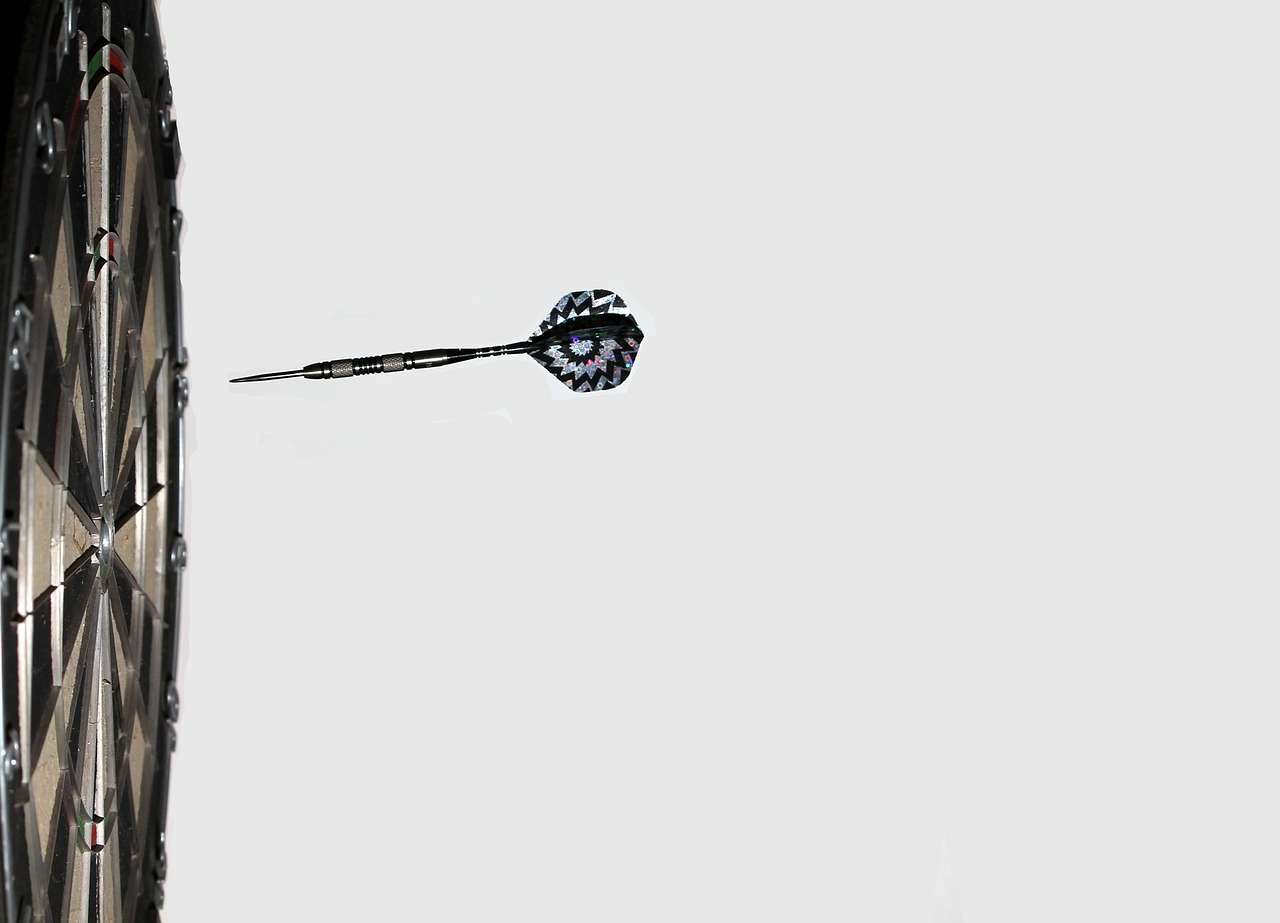
These measurements are not arbitrary; they have been carefully determined to provide a challenging yet fair playing field. Ignoring these dimensions can drastically alter the game and make it difficult to improve your skills. Understanding these dimensions is the first crucial step when you **dartboard richtig aufhängen**.
Benötigte Materialien und Werkzeuge (Required Materials and Tools)
Before you begin, gather the necessary tools and materials. Having everything on hand will streamline the process and prevent frustrating delays.
- Dartboard: Obviously! Choose a high-quality bristle dartboard for durability and performance.
- Measuring Tape: Essential for accurate measurements of height and throwing distance.
- Level: To ensure the dartboard is perfectly vertical. A spirit level or laser level will work.
- Pencil: For marking the wall.
- Drill: For creating pilot holes for screws.
- Screws and Anchors: Appropriate for the type of wall you’re mounting to (drywall, plaster, brick, etc.). Use heavy-duty anchors for secure mounting, especially if the board will be frequently used.
- Dartboard Mounting Bracket (if not included with the dartboard): Most dartboards come with a mounting bracket, but if yours doesn’t, you’ll need to purchase one separately.
- Wall Protector (Optional): A dartboard surround or cabinet will protect your wall from stray darts.
- Stud Finder (Optional): Useful for locating studs in your wall for extra secure mounting.
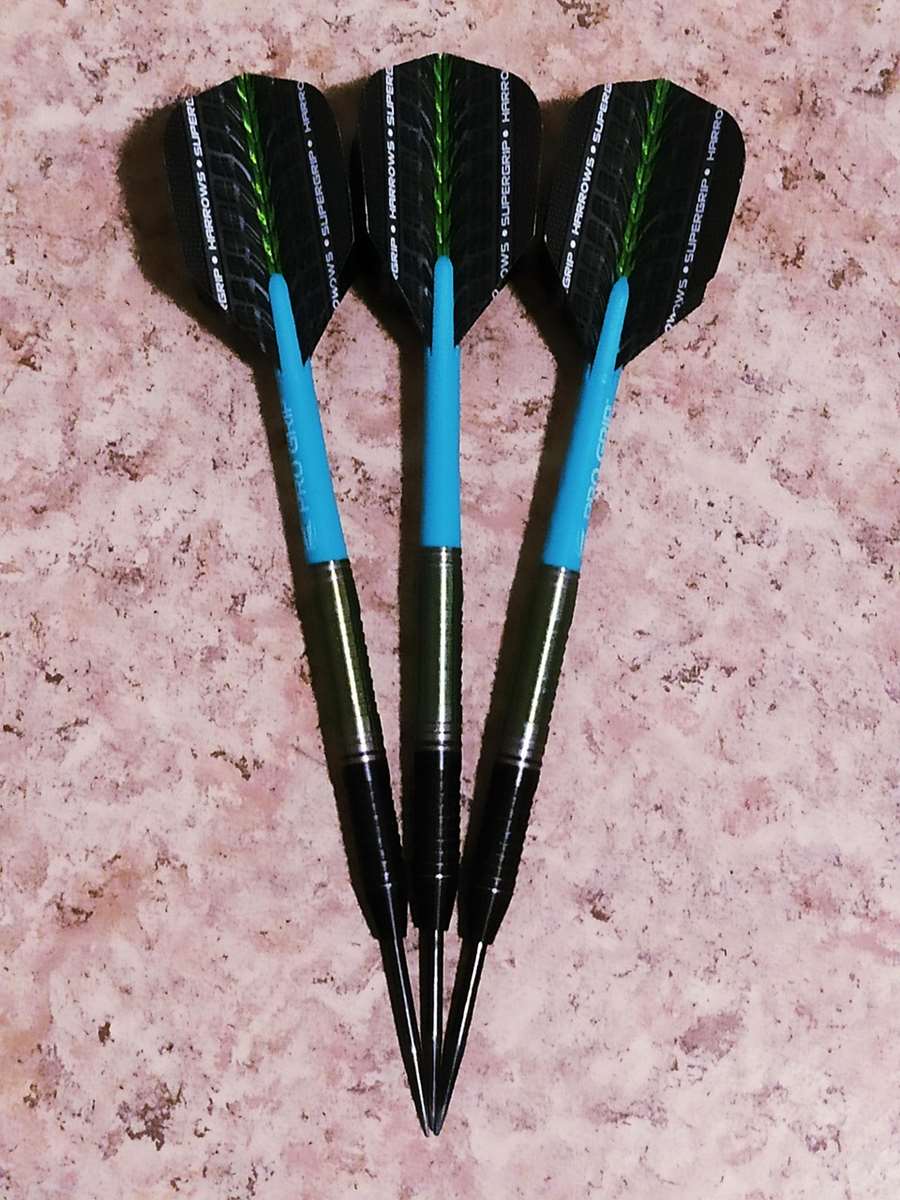
Consider a dartboard cabinet to not only protect your walls but also add a touch of elegance to your game room. A dartboard cabinet also provides convenient storage for your darts and accessories. If you are looking for more information on where to play darts, check out this article on darts flight club near me.
Schritt-für-Schritt-Anleitung zum Aufhängen des Dartboards (Step-by-Step Guide to Hanging the Dartboard)
Now, let’s get down to the actual process of mounting your dartboard. Follow these steps carefully to ensure a secure and accurate installation.
- Locate a Suitable Wall: Choose a wall that offers ample space around the dartboard and is free from obstructions. Avoid walls with pipes or electrical wiring behind them.
- Mark the Bullseye Height: Using your measuring tape, measure 5 feet 8 inches (1.73 meters) from the floor and mark the spot on the wall with your pencil. This will be the center of your bullseye.
- Install the Mounting Bracket: Most dartboards come with a mounting bracket that consists of a circular plate and a wall bracket. Attach the circular plate to the back of the dartboard, ensuring it’s centered. Then, position the wall bracket on the wall, using your bullseye mark as a guide. Use a level to ensure the bracket is perfectly horizontal. Mark the screw holes on the wall.
- Drill Pilot Holes: Using your drill, create pilot holes at the marked screw locations. If you’re mounting to drywall, use appropriate wall anchors. If you can locate a stud, use longer screws for a more secure hold.
- Attach the Wall Bracket: Secure the wall bracket to the wall using screws. Ensure it’s firmly attached and level.
- Hang the Dartboard: Carefully hang the dartboard onto the wall bracket. The circular plate on the back of the dartboard should fit snugly into the wall bracket.
- Check for Level: Use your level to ensure the dartboard is perfectly vertical. Make any necessary adjustments to the mounting bracket.
- Measure the Throwing Distance (Oche): Measure 7 feet 9 1/4 inches (2.37 meters) from the face of the dartboard and mark the throwing line (oche) on the floor. You can use tape or a dedicated oche marker.
Following these steps closely will ensure that you **dartboard richtig aufhängen** to professional standards. If you want to play like the pros, understanding concepts such as the dartboard triple will help your game significantly.
Häufige Fehler, die es zu vermeiden gilt (Common Mistakes to Avoid)
While the process is straightforward, it’s easy to make mistakes that can compromise your dartboard setup. Here are some common pitfalls to watch out for:
- Incorrect Measurements: Double-check all measurements to ensure accuracy. Even a slight error can affect your game.
- Not Using a Level: A tilted dartboard will lead to inconsistent throws and frustration. Always use a level to ensure the board is perfectly vertical and horizontal.
- Weak Mounting: Using inadequate screws or anchors can result in the dartboard falling off the wall. Choose hardware appropriate for your wall type and consider using a stud finder for extra security.
- Ignoring the Wall Type: Different wall types require different mounting techniques. Research the best method for your wall to avoid damaging it or creating an insecure mount.
- Neglecting Wall Protection: Stray darts can damage your wall. Invest in a dartboard surround or cabinet to protect your surroundings.
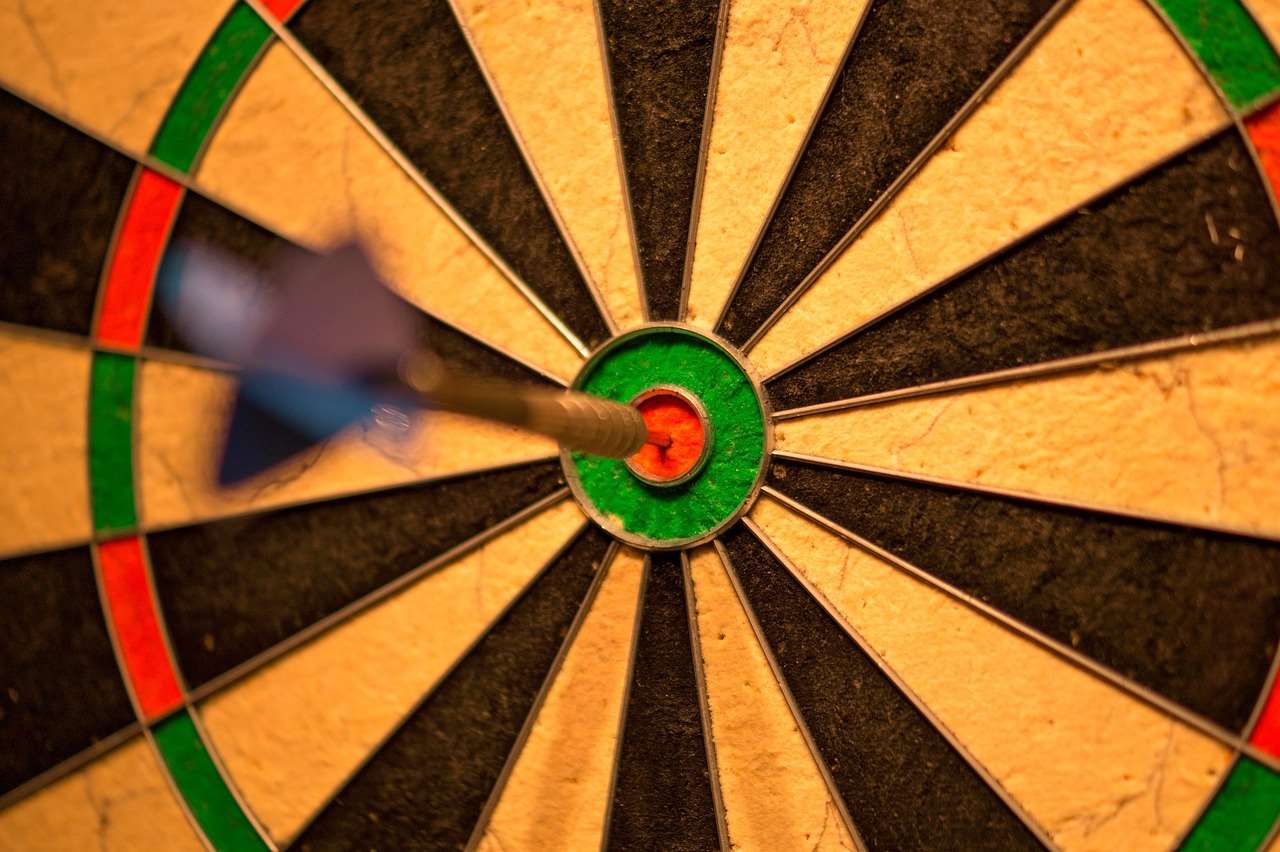
Avoiding these common mistakes will help you **dartboard richtig aufhängen** correctly the first time. Remember to prioritize safety and accuracy throughout the entire process. Some people even wager on the matches with 9 dart finish prize money to raise the stakes!
Zusätzliche Tipps und Tricks (Additional Tips and Tricks)
Here are some extra tips to enhance your dartboard setup and overall darting experience:
- Use a Laser Level: A laser level can make it easier to accurately mark the bullseye height and ensure the mounting bracket is level.
- Consider a Dartboard Cabinet: A dartboard cabinet provides protection for your wall and adds a touch of elegance to your game room. It also offers convenient storage for your darts and accessories.
- Install Proper Lighting: Good lighting is essential for accurate dart throwing. Consider installing a dedicated dartboard light to illuminate the board evenly.
- Use a Throwing Mat: A dart mat not only protects your floor but also provides a consistent throwing surface. Some mats even have the official throwing distance marked on them.
- Regularly Rotate Your Dartboard: Rotating your dartboard periodically will help to distribute wear and tear evenly, extending its lifespan.
Furthermore, explore different dart styles and grips to find what works best for you. You can even use a Free dart score app to track your stats and improvement. To help with your tools and equipment, you could use the darts swiss point tool to change your darts.
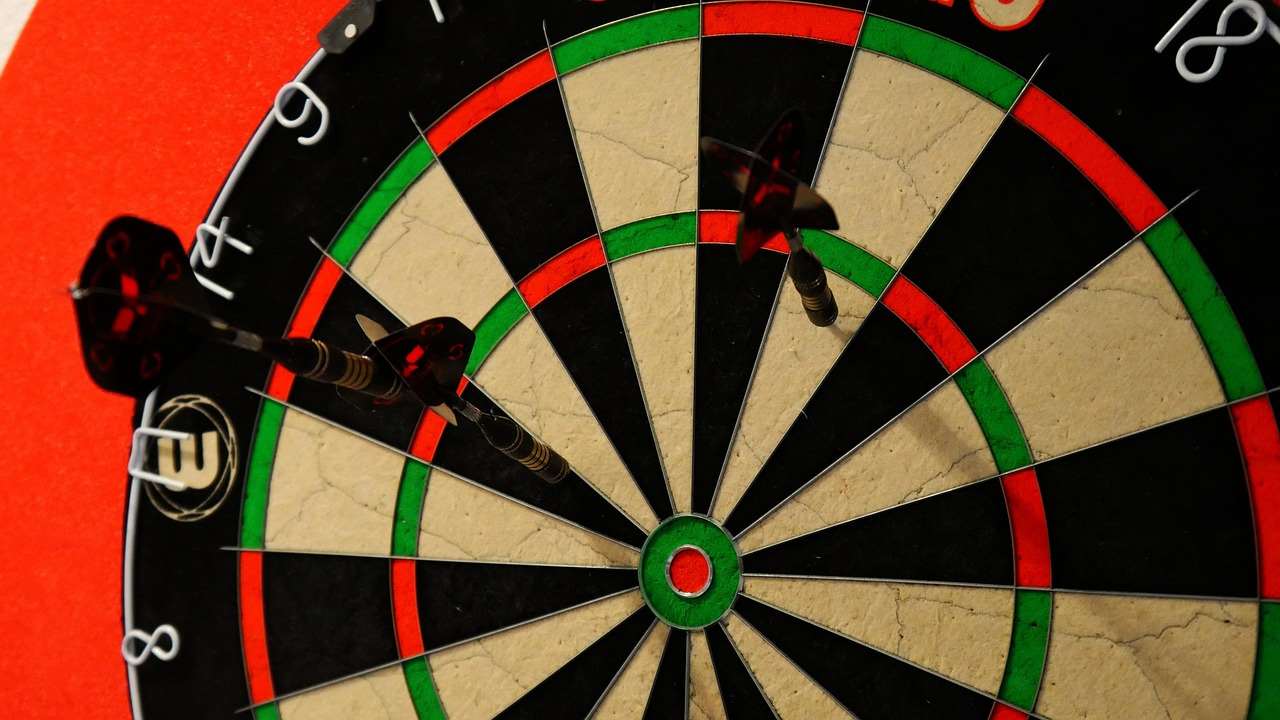
Pflege und Wartung des Dartboards (Dartboard Care and Maintenance)
Once you’ve successfully **dartboard richtig aufhängen**, it’s important to maintain it properly to ensure its longevity and performance. Here are some key maintenance tips:
- Regular Rotation: As mentioned earlier, rotate your dartboard regularly (e.g., every few weeks) to distribute wear and tear evenly. This will prevent certain sections from becoming overly worn while others remain pristine.
- Remove Loose Fibers: Periodically inspect your dartboard for loose fibers and remove them carefully. This will help to prevent them from interfering with your darts.
- Avoid Moisture: Keep your dartboard away from moisture and humidity. Excessive moisture can damage the sisal fibers and shorten the lifespan of the board.
- Use Sharp Darts: Dull darts can damage the dartboard and lead to more bounce-outs. Keep your darts sharp by using a dart sharpener.
- Store Darts Properly: When not in use, store your darts in a dart case to protect them from damage.
Conclusion
Knowing how to **dartboard richtig aufhängen** is the foundation for enjoying a fair and accurate game of darts. By following the official measurements, using the right tools, and avoiding common mistakes, you can create a professional-quality dart setup in your own home. Remember to prioritize accuracy, safety, and proper maintenance to ensure your dartboard provides years of enjoyment. Now that you know how to **dartboard richtig aufhängen**, grab your darts and start playing! Get your dartboard set up correctly today and enjoy endless hours of fun with friends and family. Check out our other articles for tips on improving your game and finding the right equipment.
Hi, I’m Dieter, and I created Dartcounter (Dartcounterapp.com). My motivation wasn’t being a darts expert – quite the opposite! When I first started playing, I loved the game but found keeping accurate scores and tracking stats difficult and distracting.
I figured I couldn’t be the only one struggling with this. So, I decided to build a solution: an easy-to-use application that everyone, no matter their experience level, could use to manage scoring effortlessly.
My goal for Dartcounter was simple: let the app handle the numbers – the scoring, the averages, the stats, even checkout suggestions – so players could focus purely on their throw and enjoying the game. It began as a way to solve my own beginner’s problem, and I’m thrilled it has grown into a helpful tool for the wider darts community.